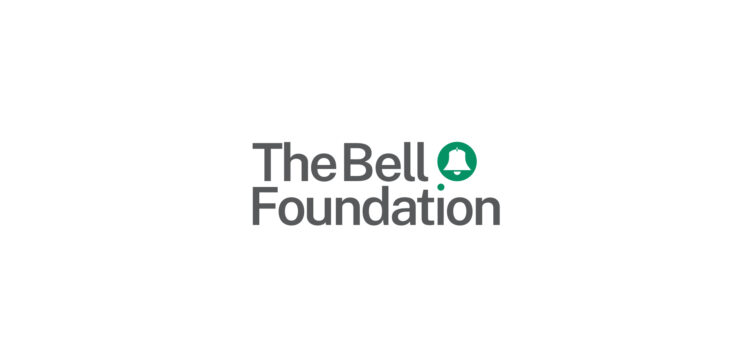Using Comprehensible English – for Secondary School (Online Regional Training)
- Date
- TBC
- Price
- £45
- Type
- Online course, Regional training
- Location
- Online
Explore our seven calls to action for the new Government to integrate children who use EAL.

Focusing on grammar patterns is about drawing learners’ attention to different aspects of grammar – such as tenses, forming negative sentences and questions, and sentence word order – and making grammar explicit while teaching the subject content of lessons. Learners using English as an Additional Language (EAL) need to speak and write coherently in English and the understanding of English grammatical structures will support their ability to do this across the curriculum. It will also aid their understanding of what they are required to listen to and read/view. This strategy can be applied to all the skills: listening, speaking, reading and viewing, and writing. It is useful for learning a new language for learners at any stage of English language proficiency.
Focusing on grammar patterns includes strategies such as:
Provide learners with frames that will help them start sentences and structure sentences, focusing on particular aspects of grammar. For instance:
Directed Activities Related to Text (DARTs) provide an alternative to traditional comprehension questions and assessing text understanding and can have an explicit focus on grammar and grammar patterns.
Graphic organisers, sometimes also known as key visuals, are a way of presenting information visually, and can focus on grammar.

You can see that the learner can follow the subject-verb-object structure. They have been provided with some verbs to choose from and can create full sentences such as “The assassination of Archduke Franz Ferdinand [subject] led to [verb] the outbreak of World War One [object]”. More synonyms for led to or contributed to could be provided if needed. The learner could fill in the cause boxes based on their history knowledge.
Activities focusing on grammar patterns will be effective in the classroom as long as they are set up with the particular needs of learners using EAL in mind and as long as they serve access to the curriculum and are not used to teach English grammar in isolation. Below are some suggestions for how to set up some of these activities in the classroom:
Before your lesson, look at texts that you ask your learners using EAL to read or listen to with the grammar focus lens. If certain grammatical structures stand out and occur frequently throughout the text, use activities or tasks centred on those structures.
Paying explicit attention to English grammar and its patterns is helpful since learners using EAL typically do not acquire these structures in early childhood. Not making these structures explicit when teaching learners who use EAL can limit their chances of succeeding at structuring sentences in the new language. Pauline Gibbons (1993) maintains that teachers need to look at language (which includes grammar), i.e., focus their attention on it, rather than through it, meaning teachers need to draw learners’ attention to language and not only focus on meaning and content.
Focusing on grammar is part of the broader concept of “metalanguage”, which is the ability of a language to comment on itself (Creese, 2005); for instance, stating that “in English sentences, verbs usually follow subjects” would be an example of such metalanguage. The development of such metalanguage gives learners tools to articulate their understanding of language.
NALDIC (1999) suggests that learners need to have their attention drawn to language and how it is used to express content knowledge instead of focusing solely on the topic alone so that they can take note of the language itself (since it is English language that poses a barrier for them to access the curriculum). Cameron (2003) uses the term “language resources” to mean the different ways (such as through vocabulary and grammar) in which English language can be utilised to express meaning. This research implies that the more-versed learners are in grammar, the more competent they will be at expressing complex knowledge about subject topics.
While Cameron discusses the benefits of focusing on grammar in relation to developing writing skills, Long (in Ellis, 2015) writes about its benefits for communicative (speaking) purposes: he argues that second language learners have a limited capacity to process a second language and experience difficulty in attending to meaning and form (grammar) at the same time. For this reason, it is crucial to find ways to explicitly teach forms of grammar during communicative activities (such as the ones that are suggested above in this article).
Focusing on grammar patterns is also useful because of the bi-/multilingual skills that learners using EAL bring. Cummins’s dual iceberg model (in Washbourne, 2013) illustrates how concepts can be transferred from one language to another; when teachers focus on grammar in the classroom, learners will often be able to draw on their prior linguistic knowledge - awareness of grammar in their home language - and apply it to English.
Creese, A., 2005. Teacher Collaboration and Talk in Multilingual Classrooms. Clevedon: Multilingual Matters.
Cameron L., 2003. Writing in English as an additional language at Key Stage 4 and post-16. [pdf] Available at: https://www.naldic.org.uk/Resources/NALDIC/Teaching%20and%20Learning/Writing%20in%20English%20as%20an%20additional%20language%20at%20Key%20Stage%204%20and%20post-16%20(PDF%20format).pdf [Accessed on 10 November 2022].
Gibbons, P., 1993. Learning to Learn in a Second Language. Portsmouth: Heinemann.
Ellis, R., 2015. The importance of focus on form in communicative language teaching. Euroasian Journal of Applied Linguistics, 1(2), pp.1-12.
NALDIC, 1999. Working Paper 5: The distinctiveness of English as an additional language: a cross curriculum discipline. Reading: NALDIC.
Washbourne, A., 2011. EAL Pocketbook. Airesford, Hampshire: Teachers’ Pocketbooks.